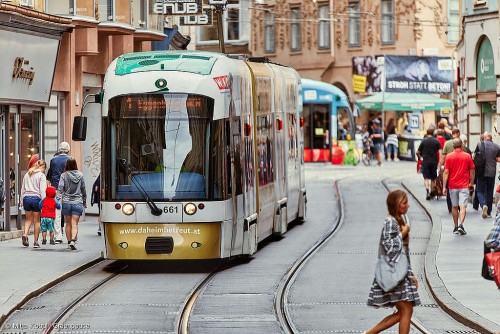
The European public transport system is famed for its efficiency and extensive network, offering a convenient way for students and travelers to move around. From vibrant city centers to picturesque rural areas, trains, buses, trams, and subways connect nearly every part of Europe. Here’s a detailed guide to help you navigate European public transport, make the most of student discounts, and travel efficiently.
Getting to Know the Public transportation Europe
Trains
Europe boasts one of the most sophisticated rail networks globally, featuring high-speed trains, regional services, and overnight trains. Key services include:
Eurail/Interrail: Passes that allow for unlimited travel across multiple European countries, ideal for extensive travel plans.
Eurostar: Connects the UK with mainland Europe via the Channel Tunnel.
Thalys: High-speed trains serving France, Belgium, the Netherlands, and Germany.
Deutsche Bahn (DB): Germany’s national railway offering extensive connections across Europe.
Buses and Coaches
For budget travelers, buses offer an economical option:
FlixBus: One of the largest networks, providing affordable travel across Europe.
Eurolines: Offers long-distance travel connecting many European cities.
Trams and Subways
Major European cities have extensive tram and subway networks.
London Underground: Known as the Tube, it is the world's oldest metro system and among the most extensive.
Paris Metro: Famous for its art nouveau design and dense network.
Berlin U-Bahn and S-Bahn: Numerous cities provide bike-sharing programs (e.g., Santander Cycles in London, Vélib' in Paris) as an alternative to public transportation.
Tips for Using European transportation system
Plan Your Route: Use apps like Google Maps, Citymapper, or specific local transit apps (e.g., BVG for Berlin, RATP for Paris) to plan your journey.
Advance Ticket Purchase: For trains and long-distance buses, buying tickets in advance can save money and guarantee a seat.
Ticket Validation: In some countries, like Italy and France, tickets must be validated before boarding. Look for validation machines on platforms or at station entrances.
Basic Language Skills: Knowing a few key phrases in the local language can be very helpful, especially in less touristy areas.
Student Discounts
In EU transportation policy many European countries offer discounts on public transportation for students. Here’s how to access them:
International Student Identity Card (ISIC): Recognized in many countries, the ISIC card provides discounts on travel and other services.
University Student Cards: Often, university-issued student cards can be used to obtain discounted transport passes.
Always carry your student ID and any relevant travel cards to take advantage of these discounts.
Efficient Travel Tips
Contactless Payments: Many cities, like London and Paris, accept contactless payments on public transport, which can save time on purchasing tickets.
Off-Peak Travel: Traveling during off-peak hours can help you avoid crowds and sometimes get cheaper fares.
Bike Sharing: Numerous cities provide bike-sharing programs (e.g., Santander Cycles in London, Vélib' in Paris) as an alternative to public transportation.
Local Transit Apps: Download local apps for real-time updates, route planning, and service alerts.
Understanding Zones: Cities like London and Paris have zoning systems for fare calculation; knowing which zones you’ll be traveling through can help you buy the correct ticket.
Combining Transport Modes: Use a mix of different transport types (e.g., bus and bike) for the most efficient travel routes.
Navigating Europe's public transport as a student can be both economical and efficient with some planning and know-how. Utilize student discounts, understand the local transit systems, and use technology to make your travels smooth and enjoyable. Whether you’re commuting daily or exploring new cities, Europe’s extensive network ensures you’re well-connected to your destinations. Safe travels!